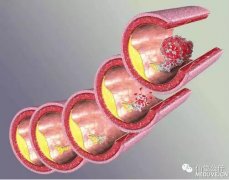2016年3月11日 讯 /生物谷BIOON/ --最近,刊登于国际杂志Nature Communications上的一项研究报告中,来自爱丁堡大学的研究人员通过研究设计了一种观察组织的新技术,该技术或可帮助诊断并且治疗多种疾病,比如癌症等。相比目前存在的方法而言,该技术具有更高的灵敏性,而且其可以帮助研究者对患者进行疾病的早期诊断。
医生们或许会通过监测患者机体细胞的改变来检查患者是否对某种疗法产生反应,而这项研究中研究人员开发了一种特殊探针,该探针可以在细胞中“点亮”特殊的靶点;随后研究者利用真菌细胞进行了检测,同样相同的检测技术也可以用于观察病人组织样本中的细胞。这种探针是由一种小型肽类分子组成,肽类分子可以帮助识别特殊的靶点,同时肽类分子还可以吸附一种新型的荧光标记物,随后研究者就可以利用显微镜来追踪标记物,从而观察细胞中靶点所产生的位置。
由于这种新型探针优于当前存在的探针,因此研究者将会利用这种技术对每个细胞中产生的靶点多少进行定量检测,这或许就可以帮助他们检测出组成组织的分子间的细微改变,进而对疾病的发生做出早期预警,而实时监测这种改变也可以帮助分析患者对某种疗法的反应。
研究者表示,未来某一天这种新方法或许就可以帮助改善他们对病人的筛查,以便可以及时利用临床成像技术(PET扫描)对患者进行快速扫描筛查。最后Marc Vendrell博士说道,肽类分子是一种指示疾病迹象的强大工具,但截止到目前为止我们并没有一种很好地方法来追踪肽类,而利用本文开发的新技术,研究者就可以通过制造探针来更加精准地对个体早期疾病的发生进行诊断。(生物谷Bioon.com)
本文系生物谷原创编译整理,欢迎转载!点击 获取授权 。更多资讯请下载生物谷APP.

doi:10.1038/ncomms10940
PMC:
PMID:
Spacer-free BODIPY fluorogens in antimicrobial peptides for direct imaging of fungal infection in human tissue
Lorena Mendive-Tapia, Can Zhao, Ahsan R. Akram, Sara Preciado, Fernando Albericio, Martin Lee, Alan Serrels, Nicola Kielland, Nick D Read, Rodolfo Lavilla & Marc Vendrell
Fluorescent antimicrobial peptides are promising structures for in situ, real-time imaging of fungal infection. Here we report a fluorogenic probe to image Aspergillus fumigatus directly in human pulmonary tissue. We have developed a fluorogenic Trp-BODIPY amino acid with a spacer-free C-C linkage between Trp and a BODIPY fluorogen, which shows remarkable fluorescence enhancement in hydrophobic microenvironments. The incorporation of our fluorogenic amino acid in short antimicrobial peptides does not impair their selectivity for fungal cells, and enables rapid and direct fungal imaging without any washing steps. We have optimized the stability of our probes in human samples to perform multi-photon imaging of A. fumigatus in ex vivo human tissue. The incorporation of our unique BODIPY fluorogen in biologically relevant peptides will accelerate the development of novel imaging probes with high sensitivity and specificity.



